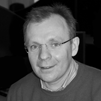
 Chris Conway
Chris Conway
Chief Architect, Quantiv
When I explain what I do – to family, friends and acquaintances – it can be all too easy to disappear into a world of jargon and abbreviations.
This problem also affects professional descriptions, where formal CVs can be equally unhelpful and IT job titles can be vague, rarely showing what’s really involved in a role or what experience is needed.
But personal histories can be more enlightening...
Beginnings
In my teens, I was fascinated by electronics (crystal radios, amplifiers, early synthesisers, etc.). So, to find out more, I enrolled on a ‘sandwich’ course at University College London (UCL), sponsored by GEC Telecommunications.
At GEC, my student status – instead of being a barrier – allowed me to discover the inner workings of the company. I gained insight on everything from technical design and production to admin and sales and marketing.
After graduating from UCL with a degree in electronic engineering, I found myself more drawn to the world of digital electronics and computing (a lecture by the U.S. computer scientist, Mike Lesk, was a key influence on this).
A ‘grand’ job title
I left GEC and joined a small software house, the Software Partnership (SP). The company had its own ‘transaction processing’ platform (think software for payments) and was a pioneer in online banking technology.
I arrived at SP feeling chuffed to be given the rather grand title of ‘Computer Systems Designer’.
Until I discovered everyone in the company was described that way.
But after the initial deflation, I learned the title – and its application to all – was no accident.
SP had a principle that all those involved in a project contributed to its success, so everyone in the company should be described in the same way.
This early lesson remains in my mind to this day.
From the UK to Europe
After being trusted with programming (‘developing’) for UK banks such as TSB, Barclays, and Royal Bank of Scotland, SP took me to Europe… well, at least to The Netherlands, with Rabobank, ING, and BNG.
In the mid-90s, SP became part of a global business (Deluxe Data International). This gave me wider experience of finance applications, no longer just in the UK and The Netherlands, but across Europe and the U.S. too.
Joining Quantiv
Back on home soil and staying with transaction processing, I joined a small start-up company, Quantiv.
My initial work at Quantiv included the analysis, design and implementation of ‘enterprise resource planning’ (ERP) systems, in areas as diverse as milk processing, paint manufacture, and materials handling.
A ‘magic’ diversion
But as if that weren’t variety enough, I took a detour into the literary world in the early noughties with The Book Partnership. I started as ‘technical director’ at the fledgling company, but quickly learned that, in start-up land, one good project leads to leadership.
This even provided 15 minutes of fame in the headlights of the press, while supporting independent booksellers with the release of the final book in the Harry Potter series: Harry Potter and the Deathly Hallows.
Back to reality
My grandad used to say: “A small house has a large mouth.”
And from my experience at The Book Partnership, I discovered the same applies to small businesses. Small companies have all the needs of larger organisations – even if they don’t have the budgets.
This gave me a respect for the practical realities of running an organisation and is something else that has stayed with me.
A new chapter at Quantiv
Starstruck, but wiser, I became more engaged in Quantiv again. I set about designing and developing further software products for online retail, insurance, merchandising, and donation processing.
Highlights included working with Hotel Chocolat (a Willy Wonka project, if ever there was one) and JustGiving (the world’s first online fundraising platform).
Quantiv’s evolution
The software platform we created earned a reputation for enabling organisations to control their processes precisely and effectively.
But we also came to realise how much our clients could benefit further if they were able to focus on the numbers that matter most to their businesses – without being distracted by masses of irrelevant detail.
And so, we refined our work, leading to our latest products, NumberWorks and NumberCloud.
Together, these new technologies now allow organisations to manage their application data – and turn it into actionable operational information. Because when you have access to the right information, understanding follows, which in turn helps you make the right decisions for your organisation.
The IT industry can be difficult to understand and there’s no single route through it. But after more than three decades, I still think I have one of the best jobs in the world.




